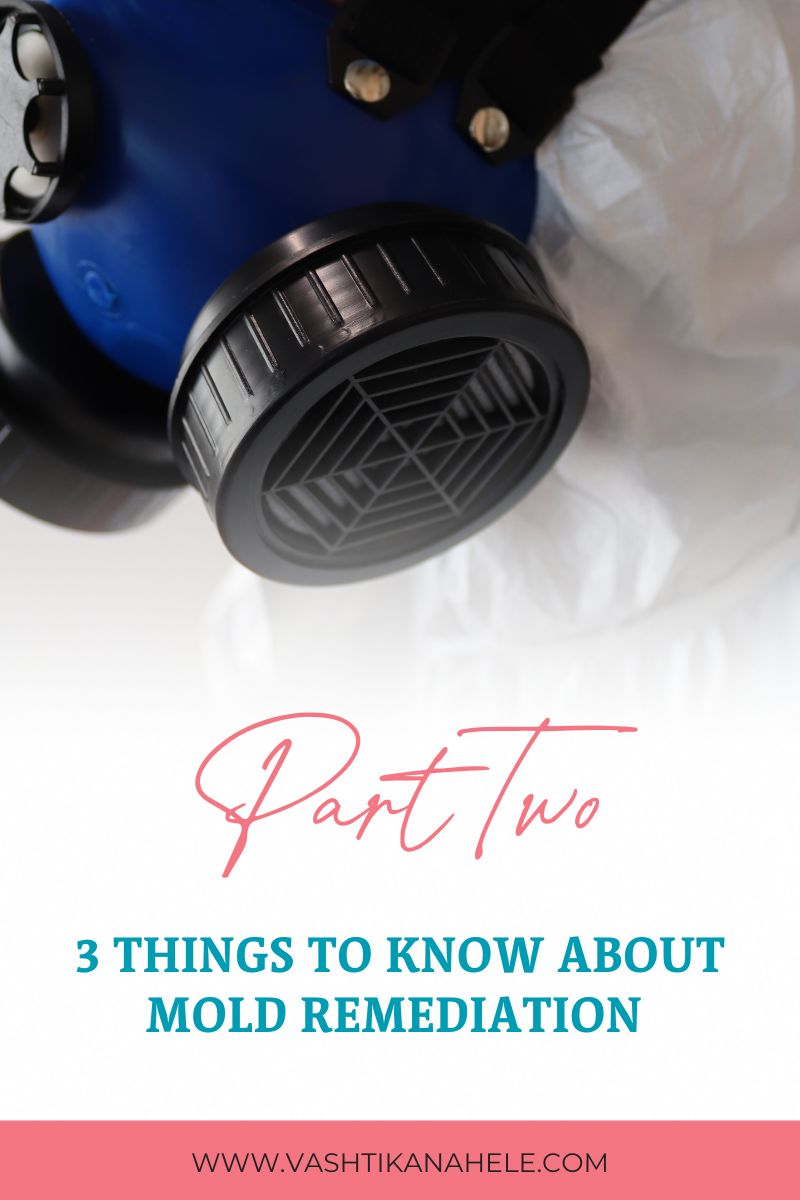3 Things to Know About Mold Remediation
Part Two in Our Mold Toxicity & Chronic Illness Series
While avoiding mold spores may be enough to manage some of the more common mold allergy symptoms like sneezing, asthma, and allergic rhinitis, those of us with mold toxicity and/or mold colonization need to take things several steps further in order to truly heal from mold and other complex chronic conditions. Typically, this means detoxing mold from our bodies and remediating our homes, offices, vehicles, and other mold-contaminated living spaces.
This second blog post in our Mold Toxicity and Chronic Illness Series focuses on mold remediation: one of the most important steps we can take when recovering from mold illness. If we don’t eliminate mold from our bodies and living environment, it’s very difficult (if not impossible) to take back our health.
Mold Removal vs Mold Remediation
Mold remediation and removal are often used interchangeably, as both pertain to the removal of mold spores. However, there are some pretty major differences between the two. Mold removal, for instance, refers to the process of removing (or cleaning) visible mold from contaminated ceilings, walls, floors, or other spaces. Simply removing mold from surfaces does not get to the root of the problem; the mold will come back (sometimes with a vengeance).
On the other hand, mold remediation involves setting up containment, removing and disposing of mold-contaminated materials, sanitizing affected areas, correcting the moisture source, and taking preventive measures to ensure mold cannot regrow. Mold remediation is a much larger undertaking that’s absolutely necessary when treating mold toxicity and other complex chronic conditions.
What to Know About Mold Remediation
Now that we’ve discussed the main differences between mold removal and remediation, we’re going to share three things we’ve learned about the mold remediation process. We understand how overwhelmingly stressful and financially challenging mold remediation is, and Dr. Fox and I are here to help you navigate each step along the way.
1. You’ll Need a Professional Mold Inspector & Remediator
Living with (and treating) a complex chronic illness such as mold toxicity can be financially devastating. Most mold-related healthcare appointments and treatments are not covered by medical insurance, and very rarely will your homeowners or renters insurance policy cover your mold remediation costs. It can be very tempting to cut corners where possible or even serve as your own mold inspector and remediator.
While certain steps throughout the mold remediation process can certainly be done on your own (for example, collecting your ERMI dust sample), it’s a good idea to bring in professionals to inspect and remediate your home. Some of the best credentials to keep an eye out for when hiring a mold inspector include:
- Building Biology Environmental Consultant (BBEC).
- American Council for Accredited Certification (ACAC).
- Institute of Inspection, Cleaning, and Restoration Certification (IICRC).
Depending on the inspector you choose, they may be able to recommend a reputable mold remediation company as well. We recommend gathering quotes from several remediation companies and asking lots of specific questions before making a decision.
2. Multiple Living Spaces May Be Affected
When you’re living in mold, multiple spaces throughout your home may be affected. Some of the more common mold-prone spaces include basements, bathrooms, laundry rooms, crawl spaces, garages, kitchens, attics, and other areas with high indoor humidity. Other mold-prone areas include window sills, air conditioning units, refrigerator gaskets and water filters, and vents.
While dehumidifiers can also harbor mold when they’re not properly cleaned or maintained, they’re necessary for keeping indoor humidity levels below 50 percent. And remember, high indoor humidity levels promote mold growth and harm your home’s air quality!
3. Some of Your Belongings May Be Salvageable
As part of the mold remediation process, many experts recommend disposing of any belongings that could be contaminated with mold and mycotoxins (specifically porous items that cannot be placed in a washing machine). Some items, however, can be laundered or wiped down rather than tossed. Refer to this guide from Surviving Toxic Mold to determine which items to toss or keep.
Alternatives to Mold Remediation
When you’re sick with mold but cannot remediate your home for any reason, moving to a new home may be necessary. It’s important to note, however, that finding a mold-safe property can be just as challenging as remediating a moldy home (remember, mold and water damage are usually hidden). You’ll want to ensure you’re not moving from one mold-contaminated environment to another (this happens all too often!).
To learn how to find a mold-safe property, check out this post from Avoiding Mold. The sooner you can leave the moldy environment, the better (we know this is so much easier said than done!). SurvivingMold is another great house-hunting resource for those with mold toxicity and chronic inflammatory response syndrome (CIRS).
Healing is Possible After Mold Remediation
Healing from mold toxicity is a journey, and for many, mold remediation alone isn’t enough to recover from mold sickness. Our bodies often need time to detoxify and heal from mold exposure, especially when mold colonizes in the body or we’ve been living in mold for many years. Healing from mold toxicity typically requires remediation, detoxification, good nutrition, and the use of mycotoxin binders.
We’ll discuss these other steps in the healing process as our Mold Toxicity and Chronic Illness Series continues!
Is mold toxicity preventing you from regaining your health? Book a free 15-minute Discovery Call to learn how 1:1 Functional Medicine Coaching can help you heal from mold toxicity and complex chronic illness.
References:
- Crista, J. (2018). Break the mold: 5 tools to conquer mold and take back your health. Wellness Ink Publishing.
- Nathan, N. (2018). Toxic: Heal your body from mold toxicity, lyme disease, multiple chemical sensitivities, and chronic environmental illness. Victory Belt Publishing, Inc.







Pingback: The Best Binders for Mold Toxicity - Vashti Kanahele